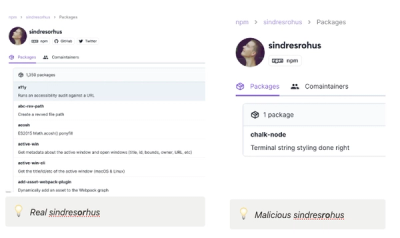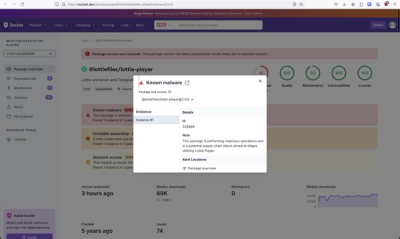What is chalk?
The chalk npm package is a popular library for styling and coloring text in the terminal. It provides an easy-to-use API for applying various text styles, such as color, background color, bold, underline, and more, to console output in Node.js applications.
What are chalk's main functionalities?
Text color
Change the color of the text. In this example, the text 'Hello world!' will be printed in blue.
console.log(chalk.blue('Hello world!'));
Background color
Change the background color of the text. Here, 'Hello world!' will have a red background.
console.log(chalk.bgRed('Hello world!'));
Text styles
Apply text styles such as bold, italic, underline, etc. This code sample makes the text 'Hello world!' bold.
console.log(chalk.bold('Hello world!'));
Combining styles
Combine multiple styles together. The text 'Hello world!' will be bold with blue text and a red background.
console.log(chalk.blue.bgRed.bold('Hello world!'));
Composing multiple styles
Create reusable composed style functions. This creates an 'error' style that is bold and red, which can be used to print error messages.
const error = chalk.bold.red; console.log(error('Error!'));
Template literals
Use tagged template literals for styling. This allows for more readable code when applying multiple styles.
console.log(chalk`{blue.bold Hello} {red world!}`);
Other packages similar to chalk
colors
The 'colors' package is similar to chalk and allows for coloring and styling terminal output. Unlike chalk, 'colors' extends String.prototype to add color and style methods directly to strings, which some may find less clean than chalk's functional approach.
cli-color
The 'cli-color' package provides similar functionality to chalk with a focus on performance. It offers a chainable API and additional features like column alignment and line width control, but it might be more complex to use than chalk.
ansi-styles
The 'ansi-styles' package is a lower-level library that chalk itself uses. It provides ANSI escape codes for styling text in the terminal. It's more manual and less user-friendly than chalk but offers more control for those who need it.
ink
While 'ink' is not a direct alternative to chalk, it is a React-based rendering library for interactive command-line apps that includes its own system for styling text. It's more powerful for building full CLI applications but is overkill for simple text styling.

Terminal string styling done right



colors.js used to be the most popular string styling module, but it has serious deficiencies like extending String.prototype which causes all kinds of problems. Although there are other ones, they either do too much or not enough.
Chalk is a clean and focused alternative.

Why
- Highly performant
- Doesn't extend
String.prototype - Expressive API
- Ability to nest styles
- Clean and focused
- Auto-detects color support
- Actively maintained
- Used by ~4500 modules as of July 15, 2015
Install
$ npm install --save chalk
Usage
Chalk comes with an easy to use composable API where you just chain and nest the styles you want.
var chalk = require('chalk');
chalk.blue('Hello world!');
chalk.blue('Hello') + 'World' + chalk.red('!');
chalk.blue.bgRed.bold('Hello world!');
chalk.blue('Hello', 'World!', 'Foo', 'bar', 'biz', 'baz');
chalk.red('Hello', chalk.underline.bgBlue('world') + '!');
chalk.green(
'I am a green line ' +
chalk.blue.underline.bold('with a blue substring') +
' that becomes green again!'
);
Easily define your own themes.
var chalk = require('chalk');
var error = chalk.bold.red;
console.log(error('Error!'));
Take advantage of console.log string substitution.
var name = 'Sindre';
console.log(chalk.green('Hello %s'), name);
API
chalk.<style>[.<style>...](string, [string...])
Example: chalk.red.bold.underline('Hello', 'world');
Chain styles and call the last one as a method with a string argument. Order doesn't matter, and later styles take precedent in case of a conflict. This simply means that Chalk.red.yellow.green is equivalent to Chalk.green.
Multiple arguments will be separated by space.
chalk.enabled
Color support is automatically detected, but you can override it by setting the enabled property. You should however only do this in your own code as it applies globally to all chalk consumers.
If you need to change this in a reusable module create a new instance:
var ctx = new chalk.constructor({enabled: false});
chalk.supportsColor
Detect whether the terminal supports color. Used internally and handled for you, but exposed for convenience.
Can be overridden by the user with the flags --color and --no-color. For situations where using --color is not possible, add an environment variable FORCE_COLOR with any value to force color. Trumps --no-color.
chalk.styles
Exposes the styles as ANSI escape codes.
Generally not useful, but you might need just the .open or .close escape code if you're mixing externally styled strings with your own.
var chalk = require('chalk');
console.log(chalk.styles.red);
console.log(chalk.styles.red.open + 'Hello' + chalk.styles.red.close);
chalk.hasColor(string)
Check whether a string has color.
chalk.stripColor(string)
Strip color from a string.
Can be useful in combination with .supportsColor to strip color on externally styled text when it's not supported.
Example:
var chalk = require('chalk');
var styledString = getText();
if (!chalk.supportsColor) {
styledString = chalk.stripColor(styledString);
}
Styles
Modifiers
resetbolddimitalic (not widely supported)underlineinversehiddenstrikethrough (not widely supported)
Colors
blackredgreenyellowblue (on Windows the bright version is used as normal blue is illegible)magentacyanwhitegray
Background colors
bgBlackbgRedbgGreenbgYellowbgBluebgMagentabgCyanbgWhite
256-colors
Chalk does not support anything other than the base eight colors, which guarantees it will work on all terminals and systems. Some terminals, specifically xterm compliant ones, will support the full range of 8-bit colors. For this the lower level ansi-256-colors package can be used.
Windows
If you're on Windows, do yourself a favor and use cmder instead of cmd.exe.
Related
- chalk-cli - CLI for this module
- ansi-styles - ANSI escape codes for styling strings in the terminal
- supports-color - Detect whether a terminal supports color
- strip-ansi - Strip ANSI escape codes
- has-ansi - Check if a string has ANSI escape codes
- ansi-regex - Regular expression for matching ANSI escape codes
- wrap-ansi - Wordwrap a string with ANSI escape codes
License
MIT © Sindre Sorhus






